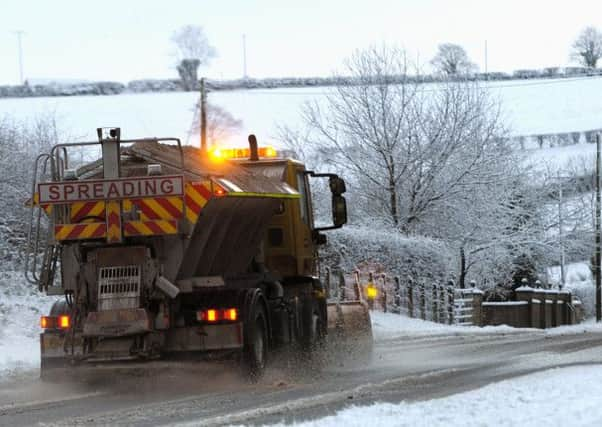Arctic blast brings snow


Forecasters say up to 10cm of snow could fall in some areas, more on high ground, especially in the north west of the province.
Blizzards and snowfalls are forecast for Wednesday afternoon and evening.
Advertisement
Hide AdAdvertisement
Hide AdMost of the snow is expected in the north and west, however, Armagh, south Antrim and County Down will also see snowfalls.
Arctic winds will reach Northern Ireland and there could be hail, sleet and even thunder and lightning along the coast, according to the Met Office.
There may also be some disruption to electricity supplies later due to snow and ice building on power lines.
The cold weather will continue through Thursday and it will remain very cold until the beginning of next week.
Advertisement
Hide AdAdvertisement
Hide AdYellow be aware warnings for snow have been issued covering all of Northern Ireland and Scotland, along with the north of England, Yorkshire, Humber and East Midlands.
Police have advised drivers to slow down, put their lights on, leave more room to stop than usual and brake gently to avoid skidding.
Motorists need to pay due care and attention on the roads in the winter and be able to adapt to changing conditions. Even the most experienced drivers can find themselves getting into difficulties when the roads are icy.
Ask yourself whether your journey is really necessary.
Before you set off on your journey:
Make sure your vehicle is in winter roadworthy condition.
Check that your tyres meet the legal requirements. Tyres that do not have the legal tread will seriously affect your car’s traction and steering.
Clear your windscreen properly of ice and snow.
Check brakes, lights, and oil and washer fluid levels.
Carry water and de-icer in the car with you.
Advertisement
Hide AdAdvertisement
Hide AdIf you are going on a longer journey, make sure you bring food, hot drinks, warm blankets and a fully charged mobile phone.
If you must travel in wintry weather remember to:
Slow down and leave plenty of room to stop. You should allow at least three times more space than usual between you and the car in front.
Brake gently to avoid skidding. If your wheels lock, ease of the brakes.
Turn on your lights to increase your visibility to other motorists and always clear all ice and snow off the car windows before setting out.
Drive slowly on snow in the highest gear possible.
Advertisement
Hide AdAdvertisement
Hide AdNever overtake snowploughs or gritting lorries. The drivers have limited visibility, and you are likely to find that the road in front of them is worse that the road behind.
Do not assume your vehicle can handle all conditions. Even four-wheel drive vehicles can encounter trouble on winter roads.
Carry wellingtons or other strong boots and weatherproof clothing in case your have to get out and walk, or push a car.
If you get stuck in snow:
Do not spin your wheels. This will only dig you in deeper. Turn your wheels from side to side a few times to push snow out of the way.
Use a light touch on the accelerator to ease your car out.
Advertisement
Hide AdAdvertisement
Hide AdUse a shovel to clear snow away from the wheels and the underside of the car.
Pour sand, gravel or salt in the path of the wheels – or even use your foot mats – to help get traction.
If you must leave your car, arrange to have it recovered as soon as possible. If you think it is in a place that may pose a danger to other road users, call the police to let them know.